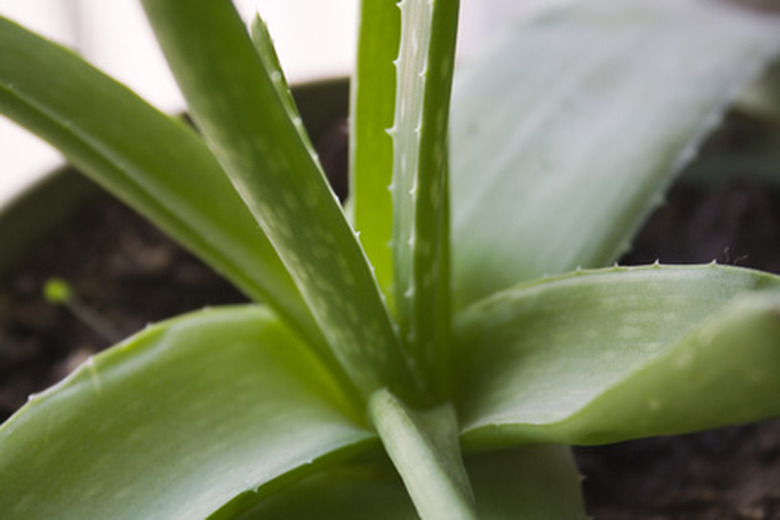Problems With Aloe Vera Plants
Aloe vera has become one of the most popular medicinal plants. Its natural origins are uncertain. It is believed to be North African but is so widely cultivated that a precise natural habitat is impossible to pinpoint. Aloe vera now grows across the world and is cultivated both as an ornamental succulent and a medicinal plant. It looks like a typical aloe plant, with a rosette of erect, fleshy leaves up to 2 feet long that are green but become pink in strong sunlight. The yellow flowers are borne on a tall spike up to 3 feet high. It will grow outdoors in frost-free areas or as a pot plant on a sunny windowsill. While hardy and resistant to most pests, aloe vera plants can suffer from a few common problems.
- Aloe vera has become one of the most popular medicinal plants.
- It looks like a typical aloe plant, with a rosette of erect, fleshy leaves up to 2 feet long that are green but become pink in strong sunlight.
Overwatering
As succulent plants adapted to dry conditions, aloe vera plants are vulnerable to overwatering and rot. Only water your aloe when the soil is dry to a depth of 2 inches. Do not keep potted plants on a saucer; allow them to drain completely after watering. A plant with soft leaves or soft, black areas around its base is suffering from rot. Do not water the plant; place it in a sunny spot. If the rot spreads, remove the plant completely from its pot and place it on a sunny windowsill with bare roots. Leave for two weeks or until the rots stops spreading, and then repot in soilless compost. Water only once a month until fresh growth appears.
- As succulent plants adapted to dry conditions, aloe vera plants are vulnerable to overwatering and rot.
- If the rot spreads, remove the plant completely from its pot and place it on a sunny windowsill with bare roots.
Aphids
Aphids are tiny green, yellow or black insects only 1/8 inch long. They are likely to infest only the new leaves and flower spikes of aloe vera plants, as the mature leaves have too thick a skin for them to feed on. Treat and aphid infestation on an aloe vera plant with a pyrethrin-based insecticide spray formulated for houseplants.
Scale Insects
Scale insects look like little bumps on the surface of leaves and can be brown or yellowish and up to 1/8 inch across. They are resistant to pesticide sprays because of their waterproof scale. Treat a scale insect infestation on your aloe vera plant with a 70 percent solution of rubbing alcohol applied directly onto the scales with a paintbrush or soft toothbrush. Monitor your plant carefully, as a single surviving scale will reproduce and reinfest the plant.
- Aphids are tiny green, yellow or black insects only 1/8 inch long.
- They are likely to infest only the new leaves and flower spikes of aloe vera plants, as the mature leaves have too thick a skin for them to feed on.
Fungus Gnats
Fungus gnats look like tiny black mosquitoes. They emerge at night from the soil around a plant. Their larvae look like tiny white maggots and live in the top inch of the soil. While they do not damage plants, their presence indicates that your aloe vera is being overwatered. Treat fungus gnats by keeping the surface of the soil around your plant clean and by reducing watering. Soaking the soil in a pyrethrin solution will kill any remaining larvae.
Mealy Bugs
Mealy bugs are similar to scale insects but are covered in fine white fluff. They can be as long as 1/4 inch. Treat them with a pyrethrin-based insecticide spray or by painting them with rubbing alcohol. Check around your aloe vera, as adult mealy bugs can hide away from the plant and even infest the roots.
- Fungus gnats look like tiny black mosquitoes.
- Check around your aloe vera, as adult mealy bugs can hide away from the plant and even infest the roots.
Aloe Mites
Aloe mites are microscopic, worm-like mites that infect aloe plants and cause the leaves to develop irregular bumps under the skin with fingerlike projections. Treat aloe mites with a commercial miticide or acaricide; they are immune to most pesticides. The damage caused by the mites is permanent, but new growth will not be affected after treatment. Aloe mites are rare on aloe vera plants kept indoors.
